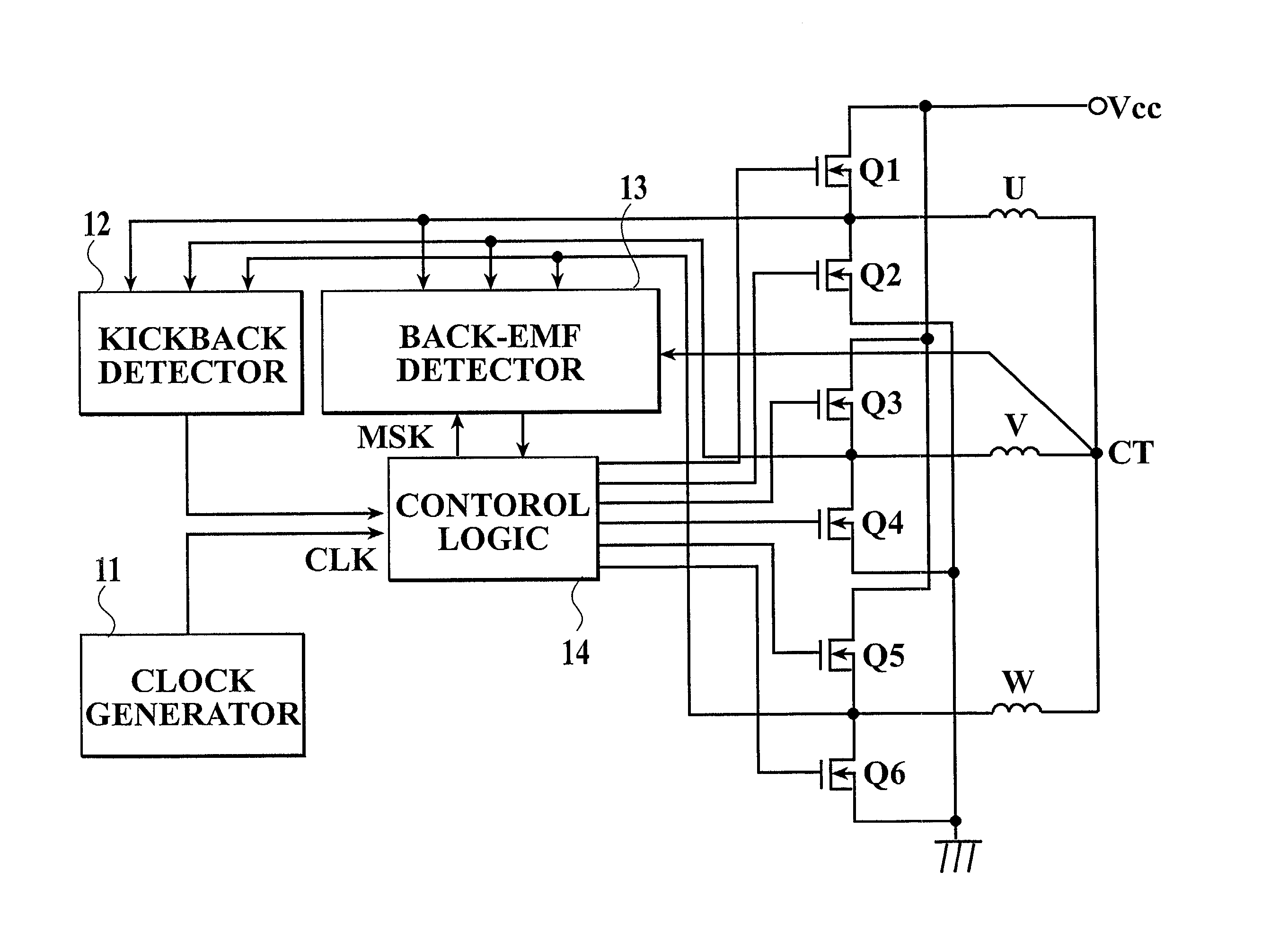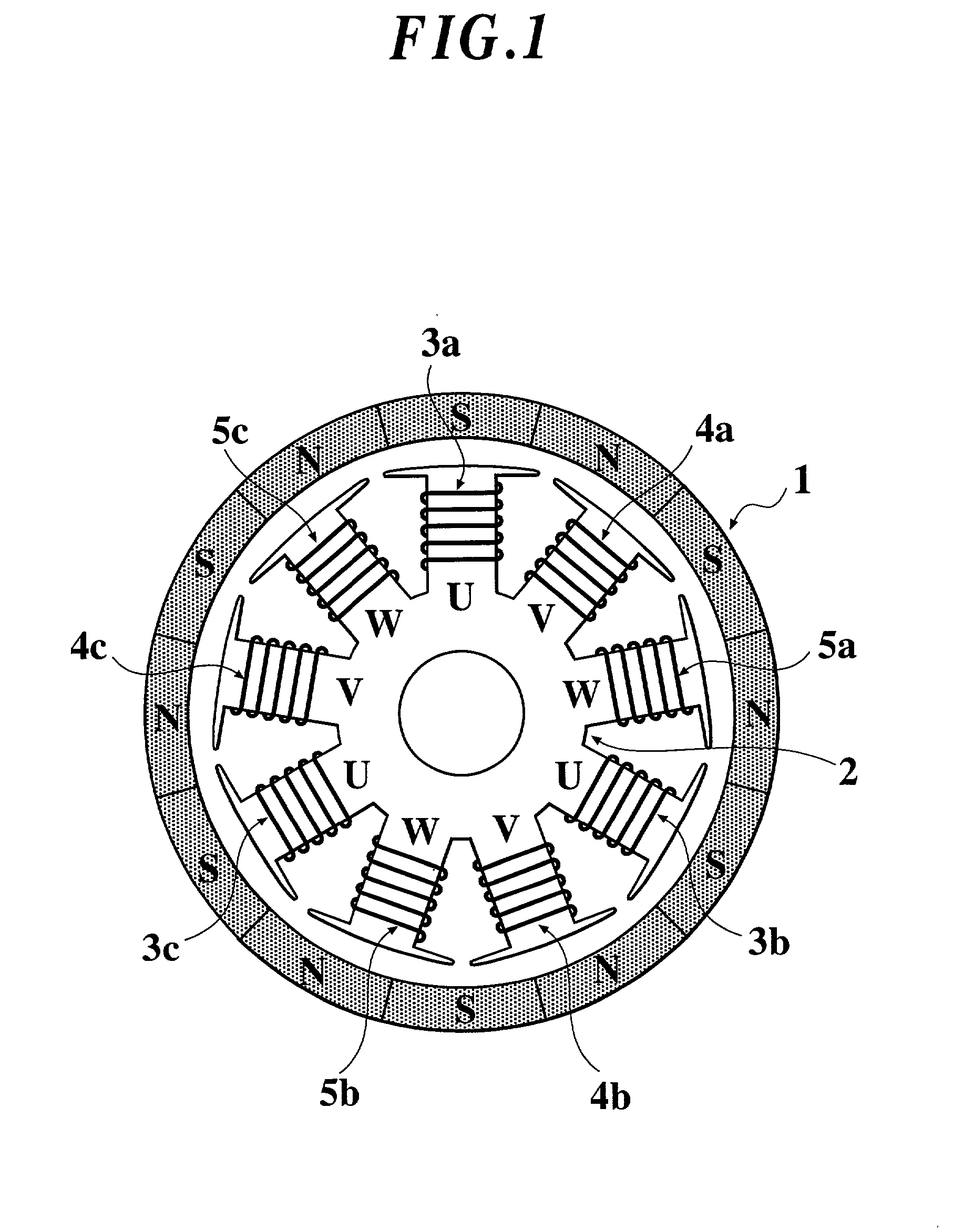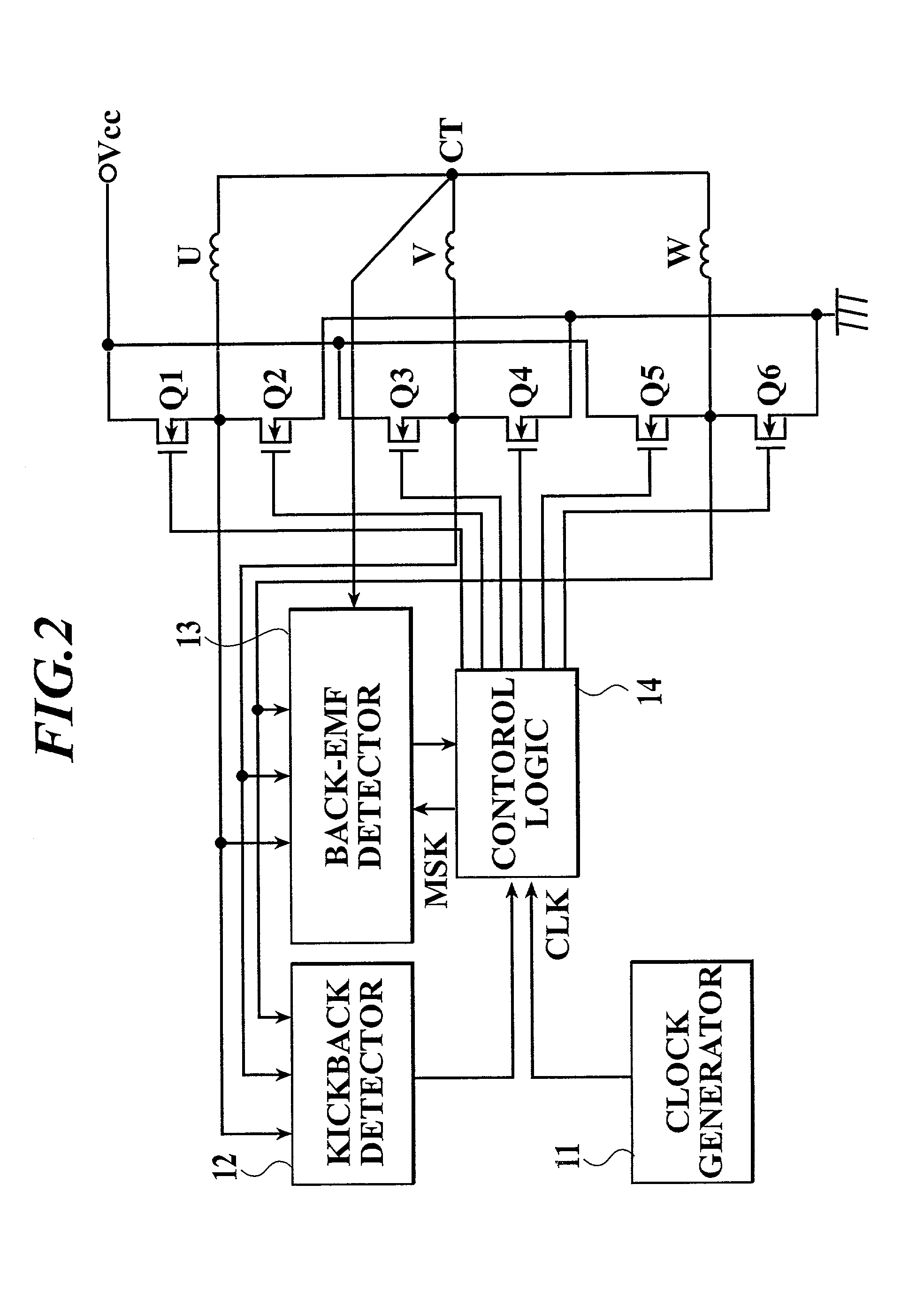Apparatus for driving three-phase brushless motor
a three-phase brushless motor and controller technology, applied in the direction of motor/generator/converter stopper, electronic commutator, dynamo-electric converter control, etc., can solve the problem of voltage being easily affected by noise, changing the rise time constant, and inconvenient to expand the circuit siz
- Summary
- Abstract
- Description
- Claims
- Application Information
AI Technical Summary
Benefits of technology
Problems solved by technology
Method used
Image
Examples
Embodiment Construction
[0036] Hereinafter, a preferred embodiment of the present invention will be explained with reference to figures, as follows.
[0037] FIG. 2 is a block diagram showing an exemplary construction of a circuit for driving a three-phase full-wave drive brushless motor according to the present invention.
[0038] The reference characters "U", "V" and "W" denote stator coils comprising windings which are wound on a core of a stator, and "Q1" to "Q6" denote output transistors for supplying a drive current to the stator coils U, V and W. The reference numeral "11" denotes a clock generator for generating a necessary clock signal for the circuit to drive, "12" denotes a kickback detector for detecting a kickback voltage generated when the stator coils U, V and W are turned off, to determine a stop position of a rotor magnet, "13" denotes a back-EMF detector (a back electromagnetic force detector) for detecting a position of the rotor magnet rotating on the basis of a zero-cross point of a back ele...
PUM
 Login to View More
Login to View More Abstract
Description
Claims
Application Information
 Login to View More
Login to View More - R&D
- Intellectual Property
- Life Sciences
- Materials
- Tech Scout
- Unparalleled Data Quality
- Higher Quality Content
- 60% Fewer Hallucinations
Browse by: Latest US Patents, China's latest patents, Technical Efficacy Thesaurus, Application Domain, Technology Topic, Popular Technical Reports.
© 2025 PatSnap. All rights reserved.Legal|Privacy policy|Modern Slavery Act Transparency Statement|Sitemap|About US| Contact US: help@patsnap.com



